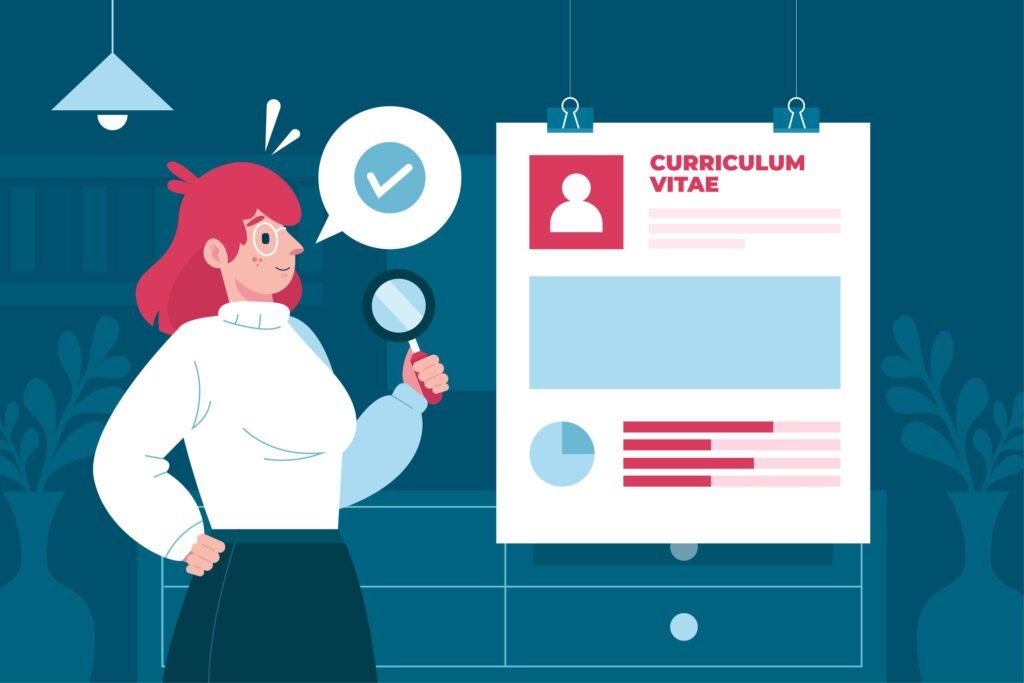What Is Resume Score? A Complete 2025 Guide to Get More Interviews

If you’ve ever wondered why your carefully crafted resume isn’t landing interviews, the answer might lie in your resume score. Simply put, a resume score is a numerical rating that shows how well your resume matches a job description and passes through Applicant Tracking Systems (ATS). Understanding and improving your resume score can dramatically increase your chances of catching a recruiter’s attention in the competitive 2025 job market.
Applicant Tracking Systems are used by nearly every large company to filter applications before a recruiter even sees them. If your resume score is low, your application could be discarded before it gets a human review. In this comprehensive guide, we will explain exactly what a resume score is, why it is critical for your job search success, how it is calculated, and proven strategies to improve your resume score so you can secure more interviews and ultimately land your dream job.
What Is Resume Score?
A resume score is essentially a metric — usually a percentage or number — that evaluates how well your resume aligns with a specific job description. It is generated by Applicant Tracking Systems (ATS) and other resume scanning tools that recruiters and companies use to quickly filter and rank thousands of applications. The higher your resume score, the more likely your resume will be shortlisted and seen by hiring managers.
Who uses resume scores?
- ATS software scans resumes and assigns scores to rank candidates.
- Recruiters use these scores to prioritize which applicants to interview. Many companies now adopt unbiased hiring practices to ensure fairness throughout the recruitment process.
- Job seekers, resume writers, and career coaches use resume scoring tools to optimize resumes for specific roles.
Common resume scoring ranges:
- 80-100%: Excellent match, strong alignment with job requirements.
- 60-79%: Good match, but needs minor adjustments.
- 40-59%: Below average, significant improvements required.
- Below 40%: Poor match, resume unlikely to pass ATS filters.
Popular online tools that provide resume scores include Cutshort, Mployee, and Hiration, which offer AI-powered feedback to help candidates increase their resume effectiveness. Using such tools is part of an efficient technical recruitment process that companies follow today.
Why Resume Score Matters in 2025
In 2025, understanding your resume score is more important than ever. ATS software is now used by approximately 99% of Fortune 500 companies and many mid-sized organizations, making it almost impossible to bypass this automated screening step.
A high resume score directly correlates with more interview invitations because it signals to the ATS that your resume is highly relevant to the job description. Conversely, resumes with low scores often never make it past the initial screening, no matter how qualified the applicant might be. This is a key challenge many face in the IT recruitment process.
According to data from Cutshort, the average resume score for job seekers is only around 37%, meaning most candidates are not optimizing their resumes effectively for ATS. By improving your resume score, you dramatically increase your chances of standing out in a crowded job market and advancing to the next stage of the hiring process.
How Resume Scores Are Calculated
Resume scores are determined by analyzing multiple aspects of your resume in relation to the job description. Here are the key factors:
Keyword Matching
The ATS scans your resume for keywords and phrases that appear in the job posting. These include skills, technologies, certifications, and job titles. For example, if the job requires “Python,” “React,” and “AWS,” these terms should be present in your resume, preferably in contextually relevant sections such as skills or experience. This is similar to how technical assessments test specific skills in candidates.
Semantic Analysis (Natural Language Processing)
Modern ATS tools use advanced NLP techniques to understand the meaning and context behind words. This allows the system to recognize synonyms or related terms, such as understanding that “backend engineer” might include experience with “Node.js” or “Java.” This deeper analysis ensures resumes are evaluated beyond simple keyword matching.
Formatting and Structure
ATS software prefers resumes in specific formats such as PDF or DOCX. The layout should be clean and organized with clear headings like Experience, Education, and Skills. Use standard fonts such as Arial or Calibri, avoid tables, images, and graphics, which ATS often cannot parse correctly. Bullet points and consistent formatting improve readability both for ATS and human recruiters.
Role Alignment and Impact
ATS algorithms also look for evidence that your previous roles align with the job requirements. This includes quantified achievements (e.g., “increased sales by 30%”) rather than vague job duties. Clearly demonstrating impact and relevance through metrics and outcomes can significantly boost your resume score.
Examples of High vs. Low Scoring Resumes
Understanding what differentiates a high-scoring resume from a low-scoring one can help you improve your own. Here are some common distinctions:
Low scoring resume characteristics:
- Generic skill lists without tailoring to the job description.
- Poor formatting with unreadable fonts and inclusion of images or tables.
- Listing duties instead of accomplishments.
- Irrelevant or overly lengthy content not related to the role.
High scoring resume characteristics:
- Tailored keywords directly from the job description.
- Clean, ATS-friendly formatting with bullet points and clear headers.
- Quantified achievements demonstrating impact.
- Concise and relevant content focused on the role applied for.
Example snippets:
- Low scoring: “Worked with different programming languages on various projects.”
- High scoring: “Developed and deployed scalable React and Python applications, improving user engagement by 25%.”
How to Improve Your Resume Score
Here are proven strategies to improve your resume score and increase your chances of landing interviews:
Tailor Your Resume for Each Job
Carefully review the job description and incorporate the keywords and phrases used. Tools like Mployee’s CV Keyword Scanner can highlight important terms you might miss. Customize your resume content for every application to maximize relevance.
Format for ATS
Use standard, readable fonts such as Arial or Calibri, include clear section headers, and avoid complex tables or graphics. Save your resume in PDF or DOCX format. Keep your layout simple, and use bullet points to organize information clearly.
Use Online Resume Scoring Tools
Leverage AI-powered tools such as:
- Cutshort: Offers NLP-based scoring and actionable tips.
- Mployee.me: Provides detailed score reports and keyword suggestions.
- Hiration: Matches your resume to the job description and recommends AI-generated bullet points.
Common Myths About Resume Scoring
There are many misconceptions about resume scoring that can mislead job seekers. Here are three common myths debunked:
- Myth 1: One perfect resume score fits all jobs.
Reality: Each job has unique requirements. You must tailor your resume score for each position. - Myth 2: Only one-page resumes receive good scores.
Reality: The ideal length depends on experience; two pages are acceptable if content is relevant and concise. - Myth 3: Fancy graphics or images improve your score.
Reality: ATS systems cannot read graphics and may reject your resume if it contains them.
When and How Often Should You Check Your Resume Score?
To stay competitive and keep your resume optimized, check your resume score:
- Before every application: To ensure it aligns well with the specific job.
- After new skills or certifications: Reflect your updated qualifications.
- When changing industries or roles: Tailor your resume for new fields.
Regularly monitoring your resume score allows you to continuously improve and stay interview-ready.
Resume Score and Interview Readiness
While a high resume score increases the likelihood that your resume will be shortlisted, it’s important to remember it’s just the first step. To maximize your chances of success, complement your resume optimization efforts with solid interview preparation. Strong interview skills, confidence, and practice can turn that resume score into a job offer.
Pair High Resume Score with Interview-Ready Talent Using Panls.ai
Looking to take your job search beyond resume optimization? Panls.ai offers Interview-as-a-Service (IAAS) — expert-led technical interviews on demand that help job seekers and recruiters alike.
Why use Panls.ai?
- Receive real-time, detailed feedback from vetted industry professionals.
- Streamline technical hiring or preparation with flexible interview scheduling.
- Boost confidence and performance in live interview situations.
Visit Panls.ai today to schedule a demo or your interview prep session and maximize your chances of success.
Conclusion
Your resume score is a critical factor in today’s automated hiring process. By understanding how resume scores work, why they matter, and how to improve yours, you put yourself in the best possible position to get noticed by recruiters. Use resume scoring tools, tailor your resume for each job, and maintain ATS-friendly formatting. Combine this with strong interview preparation—such as expert coaching from Panls.ai—to unlock your full potential and land your ideal job in 2025.
Frequently Asked Questions
A resume score above 80% is considered excellent and usually means your resume closely matches the job description and is ATS compatible.
While it’s not impossible, a low resume score drastically reduces your chances since your resume may not pass ATS filters.
Resume score reflects ATS compatibility but also measures how well your resume matches the specific job description, so it is a broader metric.
It’s best to check your resume score before each job application and anytime you update your skills or resume content.
No. While keywords are important, formatting, role relevance, and demonstrated achievements also play crucial roles.
No, these tools assist recruiters by filtering resumes but human judgment and interviews remain essential.
PDF and DOCX are generally the safest formats accepted by ATS systems.
A higher score greatly increases your chances, but interview performance and other factors also matter.
